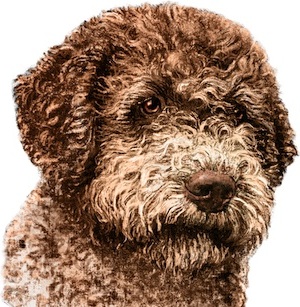|
Come!
Perhaps an owner ’s greatest concern is getting his dog to come when called. This can be a life saving command and needs to be reliably learned as well as reinforced frequently.
Things to keep in mind:
• Always praise your dog for coming to you: Never punish or yell. However upset, afraid and/or angry you may be, you want your dog to associate coming to you with only good things—hugs, treats, and happy sounding words!
• Encourage your dog from an early age to follow you: Never chase your dog. Even young puppies can run faster than most humans, so it ’s a game you will not win and encourages the opposite behavior from what you want to have happen.
• Use the “come” cue in a variety of situations, such as to get his dinner, to get a fun treat, go be presented with a favorite toy or game. If you only use come to end a playtime and/or confine your dog when you go out, it will not have pleasant associations with the word and he won ’t want to do it!
• Of all the cues, “come” needs to be continually reinforced and rewarded. Most humans wouldn ’t continue working if their paycheck stopped, and most dogs will stop coming, if they don ’t get a reward fairly regularly!
• As with all cues, avoid the temptation of repeating it. If a cue is solid, it should only be needed one time.
When training the word “Come: only use it when your dog is on a leash and you can be sure that the come will happen. Use other words temporarily when you want your dog to return to you in the yard, for example: “Here,” “In the house,” or “Let ’s go” are possible alternatives. It is important to get the dog conditioned to return to you EVERY time he hears the cue, “Come.”
When your dog is on the leash, let him go ahead of you its full length. Walk backwards quickly with treat in hand; saying the dog ’s name and “Come.” Be sure to say the word in a higher tone, loudly and with enthusiasm. Hold the treat as close to your body as possible. When your dog comes toward you, reward with treat, voice, and scratch dog under chin getting hold of the collar. Practice this during your walks with your dog and even in the house. Most dogs will readily come to you with this action.
After practicing “come” in this way for a week, fashion a longer leash by fastening two leashes together, tying a rope to your dog or buying training leash-available in multiple lengths. Let your dog be an increasingly longer distance from you before you back up and ask him to come. If he doesn ’t come, continue backing up and “reel” him in to you. When he comes, be exited and reward with a treat and praise. Do this until he regularly comes to you from a distance.
After the dog will come reliably from a farther distance, begin asking your dog to come when other things, such as a squirrel, another dog, a toy or a person, distract him. At first, do this from a short distance and then let your dog be an increasingly longer distance from you before you back up and ask him to come. If he doesn ’t come, continue backing up and “reel” him in to you. When he comes, be exited and reward with a treat and praise. Any time there is regression or lack of success, go back to the training steps and work on each one until it is solid, before asking for more.
When your dog will come to you from a distance and with distractions, it ’s time to work on the command off-leash. Go back to the original training steps and repeat without the leash; backing up about 5 feet, backing up when your dog is farther away and calling him when he is interested in something else. Remember to keep the command energetic, positive and loud!


